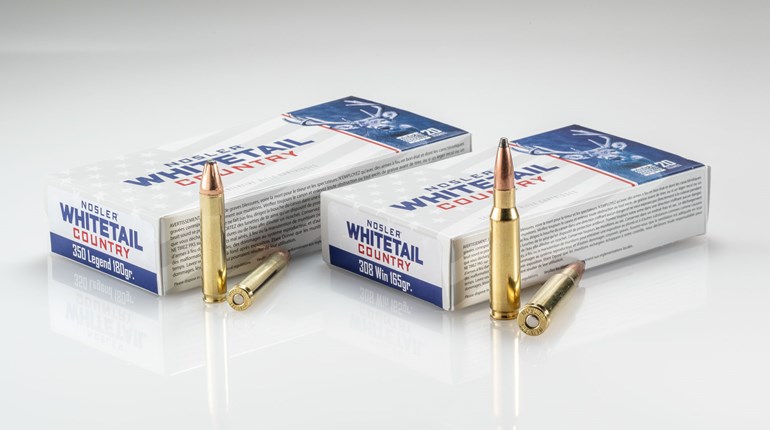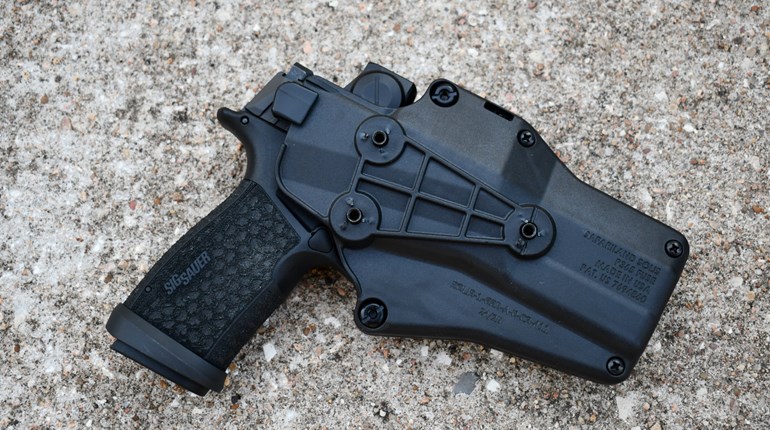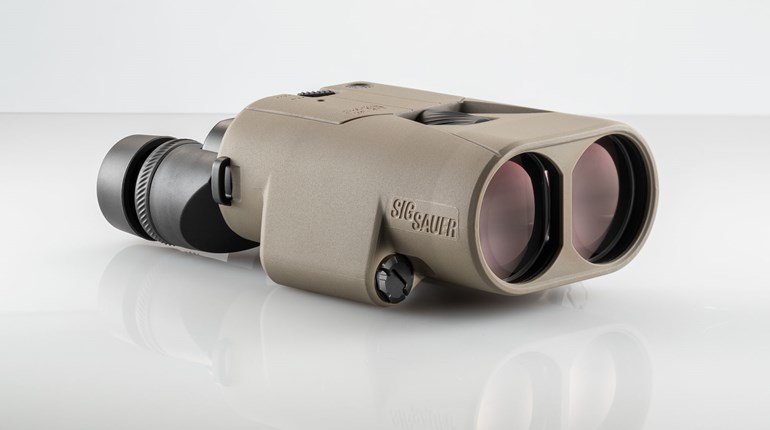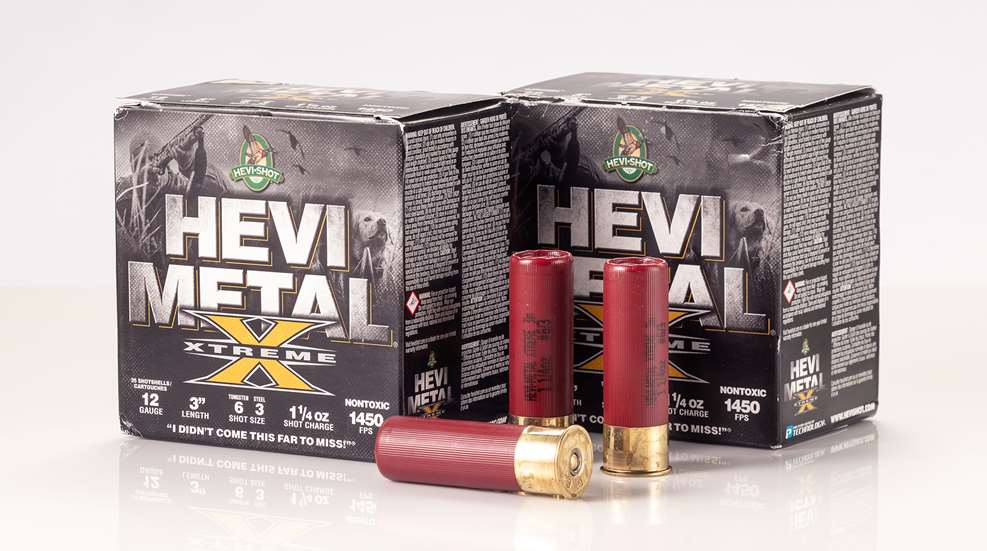
Environ-Metal revolutionized the nontoxic waterfowl shotshell in the late 1990s with the advancement of Hevi-Shot, a 12-gram per cubic centimeter (g/cc) tungsten-iron alloy that was slightly denser than both bismuth (9.8 g/cc) and lead (11.2 g/cc), significantly denser than steel (7.8 g/cc) but less dense than tungsten super shot (TSS, 18 g/cc). Hevi-Shot was—and still is—expensive, costing nearly three times as much as some of today’s steel shotshell offerings. To make their duck ammo more affordable to waterfowlers, Environ-Metal (now owned by Federal Premium) created Hevi-Metal, a stacked load that layered Hevi-Shot pellets on top of steel.
Hevi-Metal became one of the most devastating shotshells for the money when it debuted in 2010. It gave duck hunters a more lethal option than steel without having to pay Hevi-Shot prices. But a recall in 2014 due to substandard wad performance—the wads were getting lodged in shotgun barrels after the shooter pulled the trigger—made some hunters leery of Hevi-Metal. If a wad is stuck in your barrel, and you don’t notice it, the next shot could severely damage the gun’s bore. And so, the shotshell faded into obscurity and was eventually discontinued.
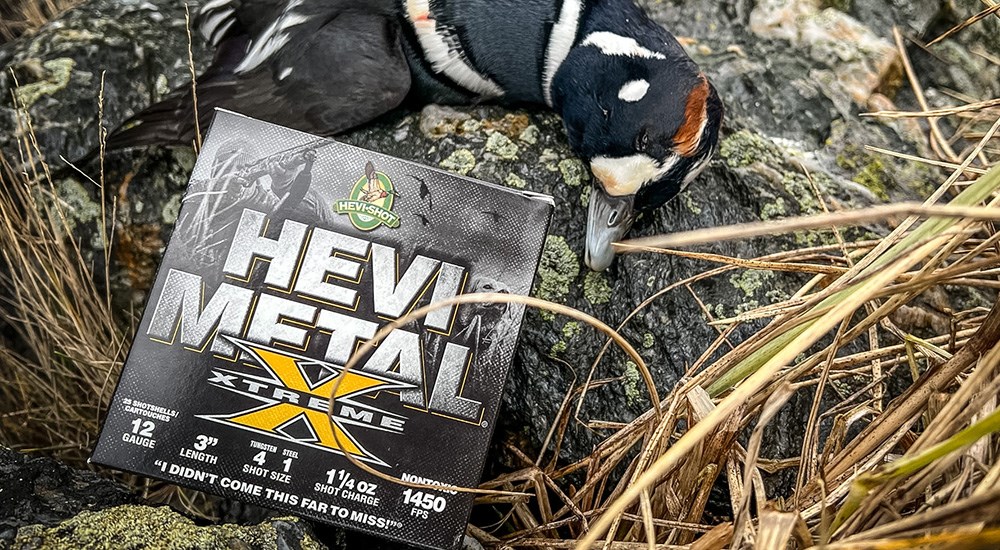
However, Federal made some tweaks and decided to bring back the load this year, rebranding it Hevi-Metal Xtreme. It’s essentially the same shotshell, but with one massive improvement: Federal’s proven rear-breaking FliteControl Flex wad was incorporated into the design. After pattern-testing the new 12- and 20-gauge offerings this summer, it’s clear that Hevi-Metal Xtreme is a deadly load, every bit as capable of clean kills as the original.
Hevi-Metal Xtreme is loaded in 3-inch shells for 12- and 20-gauge. The 12-gauge loads have a muzzle velocity of 1450 fps and charge weight of 1¼ ounces. For 20-gauge, the muzzle velocity is 1350 fps and charge weight is 1 1/16 ounces. Both gauges are offered in layered No. 6 and No. 3 or No. 4 and No. 1 shot sizes. The larger shot size is steel, which sits below the smaller Hevi-Shot pellets. If you cut open one of the hulls, you will find many of the Hevi-Shot pellets to be misshapen. Some of them look like ovals, or resemble a snowman, and other pellets are conjoined. It was long believed a payload of smooth, round pellets is needed to produce a killer pattern, but Hevi-Shot dispelled that theory.
The ratio of steel to Hevi-Shot pellets is about 70 to 30 percent, and the 12-gauge shells are topped with flax seed, which doesn’t affect performance. The flax simply fills up the remaining space in the hull before the shotshell is crimped. Federal included its FliteControl Flex wad in the design of Hevi-Metal Xtreme for improved pattern density, and the primer was engineered to burn hotter so that the propellant burns at the proper rate in cold conditions. If you are not familiar, the intensity at which propellants burn depends on the shotshell’s intended use. For example, manufacturers design waterfowl loads to burn hotter than turkey shotshells because of the frigid temperatures duck hunters shoot in. The temps during the spring turkey season are typically mild, so propellants do not have to burn as hot for the shotshell to function properly.

To determine the ballistic capability of Hevi-Metal Xtreme, I patterned the 12- and 20-gauge (No. 4 and No. 1 pellet sizes) offerings at 40 yards on 40x40-inch pieces of butcher paper. I shot each load five times from a standing position, replacing the butcher paper after every shot. For the 12-gauge shells, I used a Benelli Super Black Eagle 3 coupled with a Rob Roberts T2 Triple Threat choke (light modified). For the 20-gauge I used a Beretta A400 Xplor outfitted with a Patternmaster Anaconda Long Range choke (improved modified).
Once the pattern work was complete, I found the core of each pattern on the butcher paper and drew a 30-inch circle around it, tabulated the pellet strikes inside that circle and averaged them against the total number of pellets in each shotshell (140 for 12-gauge and 116 for 20-gauge). I also tested the loads for average muzzle velocity, shooting five times through a chronograph placed 2 feet in front of the muzzle.
The 12-gauge loads produced a five-shot average of 79 percent, plenty capable of killing any species of waterfowl at 40 yards. The best pattern placed 122 pellets inside the 30-inch circle. Muzzle velocity averaged 1419 fps. Surprisingly, the 20-gauge loads were slightly better on paper, producing an 84 percent pattern. My last two shots with the Beretta placed an incredible 107 and 110 pellets inside the circle after the first three shots were in the high 80s and low 90s. Muzzle velocity averaged 1320 fps.
Though the pattern percentage for the 20 was superior to the 12, you still have a better chance of killing a duck or goose with the 12-gauge ammo due to the sheer volume of pellets inside the hull (140 versus 116). Still, it’s impressive to see a 20-gauge put 110 of a possible 116 pellets inside the 30-inch circle. It’s a stark reminder that payloads will perform better (and worse) depending on the shotgun, choke and person behind the trigger. That’s why patterning your shotgun with a variety of loads is critical if you want to draw the best performance possible from your repeater or break-action.

During the pattern test it was evident that the smaller Hevi-Shot No. 4’s were striking near the core of the pattern while the larger steel No. 1’s littered the periphery of the 30-inch circle. The reason for this is that the Hevi-Shot pellets are smaller and have more density than the steel ones, so they will not shed velocity as quickly. The entire payload will leave the muzzle at about the same velocity (it’s impossible to know how fast each individual pellet is moving), but then the laws of physics take over. A larger, lighter pellet is going to slow down faster than a smaller, heavier one. And therein lies the advantage of shooting Hevi-Metal Xtreme. As the steel pellets’ performance drops off, the Hevi-Shot continues on, delivering enough energy to kill your intended target (at reasonable distances). This means fewer crippled ducks and geese, which should be the goal of every hunter.
At $60 per box of 25, Hevi-Metal Xtreme is an expensive shotshell, but it’s a proven shotshell. And the decision on whether to spend your hard-earned dollar on such a pricey load is up to the individual. But if you want to take advantage of the performance Hevi-Shot pellets provide, this is the most affordable way to do it.
Technical Specifications
• Gauge(s)/Length(s): 12/3", 20/3"
• Load(s) Tested: 12-gauge, 3", 1¼ ozs., No 4 &. No. 1; 20-gauge, 3", 1 1/16 ozs., No. 4 & No. 1
• Shot Material: Hevi-Shot, steel
• Muzzle Velocity: 1450 fps (12-gauge), 1350 fps (20-gauge)
• Uses: waterfowl
• MSRP: $58.99-$59.99 per 25-rnd. box; hevishot.com













